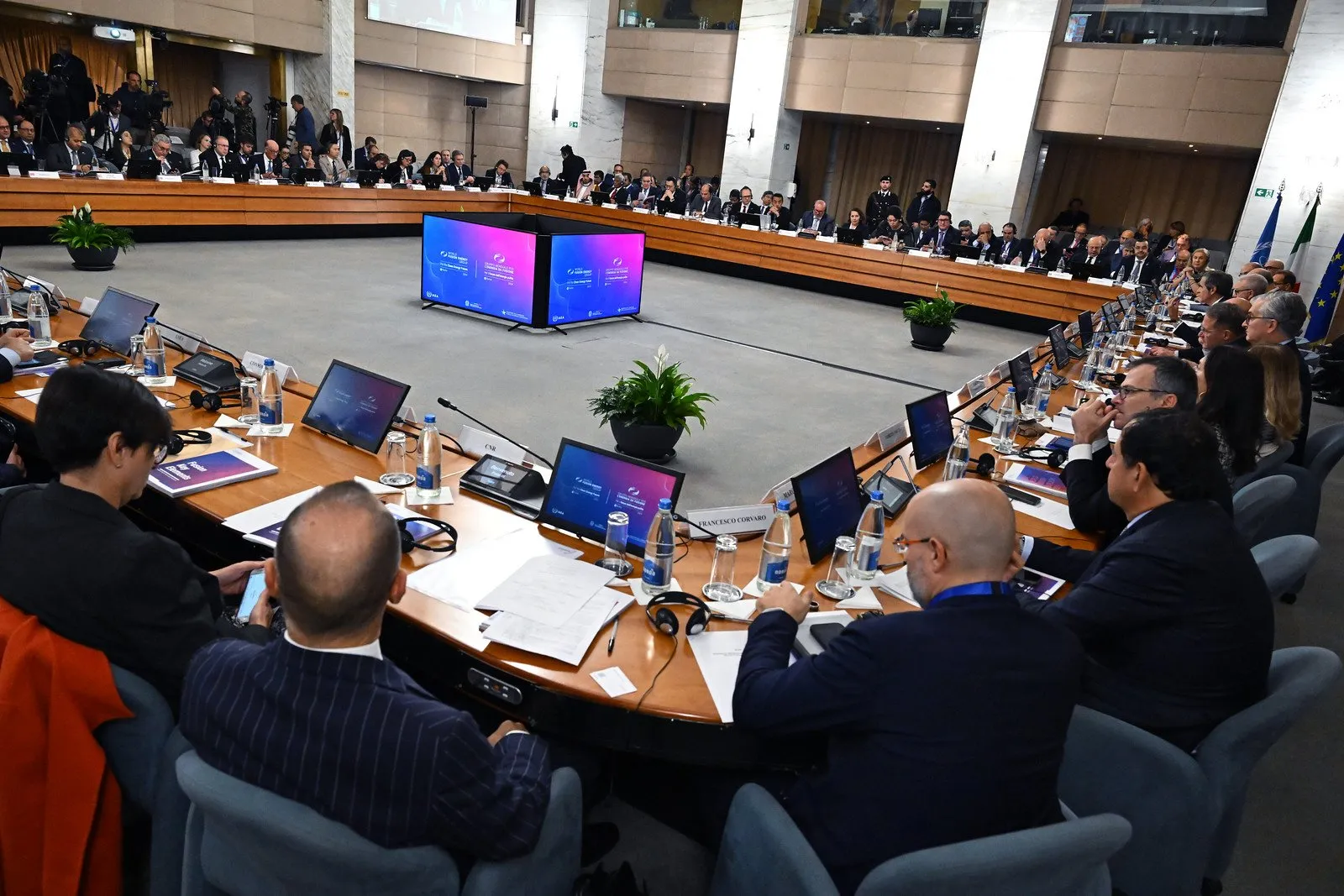The Inaugural Ministerial Meeting of the World Fusion Energy Group
By Naomi Scott-Mearns
The first ministerial meeting of the International Atomic Energy Agency’s (IAEA) World Fusion Energy Group (WFEG) was held on 6th November 2024 in Rome, Italy, bringing together public and private sectors, industry, academia and civil society to form a cohesive global fusion community.
“The Group encourages each of us to look beyond our own borders and to lay the foundations of a new energy and environmental diplomacy that multiplies the opportunities for cooperation between the North and the South of the world”, said Alfredo Mantovano, Undersecretary of State to the Presidency of the Council of Ministers, acting as Secretary for Council of Ministers meetings.
So what have they done, and why is it significant?

IAEA’s World Fusion Energy Group meeting in Rome. ©Dean Calma/IAEA
What have they done?
The World Fusion Energy Group was established in October 2023 during the IAEA’s 29th International Fusion Energy Conference in London. The first ministerial meeting of the group was held last week. The meeting reviewed global progress on fusion energy and participants discussed international collaboration to accelerate fusion’s commercialisation, how to develop global fusion supply chains and the need for a specialised fusion workforce.
The World Fusion Energy Group seeks to “act as a catalyst at this critical juncture, where unified efforts are essential to rapidly advance fusion energy development.”
At the meeting, the IAEA also launched two fusion publications: the World Fusion Outlook 2024 and Fusion Key Elements.
Why is it impressive?
This was the first meeting bringing together high-level figures from a number of countries to support the development of fusion worldwide. There was a strong turnout of industry players and government ministers, marking the event and the future of the group as a critical assemblage for international cooperation on commercial fusion power.
Why is it important?
The World Fusion Energy Group is important because it is a global group championing fusion energy. It involves diverse actors from IAEA member countries, the private sector, international organisations and non-governmental organisations. The global nature of the group supports the development of fusion worldwide and seeks to foster collaboration to enable this. As ITER commented in their Newsline, fusion will require cross-border and cross-sector collaboration.
Andrew Holland, CEO of the Fusion Industry Association (FIA) who gave a fusion industry status update at the meeting, said about the event: “The WFEG was an important step and it was good the Director General Grossi added his personal support to it. This is a signal of the importance of fusion at the highest level.”
As a result of the event, there were several formal cooperation agreements established, including:
- Between ITER and the IAEA. The two actors signed a Memorandum of Understanding to strengthen cooperation on fusion, replacing an earlier agreement that had expired.
- Between the RSE (Ricerca sul Sistema Energetico) in Italy and Blue Laser Fusion Inc. The two actors, one an Italian state actor and one a US-based private fusion company, signed a Memorandum of Understanding to do joint research on the world’s first practical inertial fusion energy demonstration.
- The FIA signed a ‘Practical Arrangement’ with the IAEA to cooperate together on fusion.
There were many other key players in fusion present at the meeting, including Milena Roveda the chair of the European Fusion Association (EFA). Milena spoke at the event about the importance of partnerships to support fusion, but argued for greater protections and management of public private-partnerships: “EFA is proud to be facilitating greater European collaboration, and it’s clear that to attract investment in fusion technologies and support innovation, we must have clearer guidelines that protect European intellectual property (IP) in public-private partnerships. Without this, catalytic investment in fusion supply chains will be limited. Europe must act now to develop balanced guidelines on IP that protect private innovation and support the public interest in making European commercial fusion a reality.”
What’s next?
IAEA Director General Rafael Mariano Grossi said at the event: “The IAEA remains steadfast in its support of fusion energy development, championing initiatives that bring us closer to realising the dream of limitless, clean energy…. Together, let us embrace the promise of fusion energy, forging a path towards a brighter, more sustainable future for all.”
The World Fusion Energy Group must pay attention to ensuring that the benefits of fusion energy are available to all and encourage the capacity of countries not currently looking at fusion. This is part of ensuring that fusion is part of the just energy transition. The Kingdom of Morocco had previously stated the importance of building the continent of Africa’s capacity in fusion science, especially establishing skills training to benefit developing countries.
